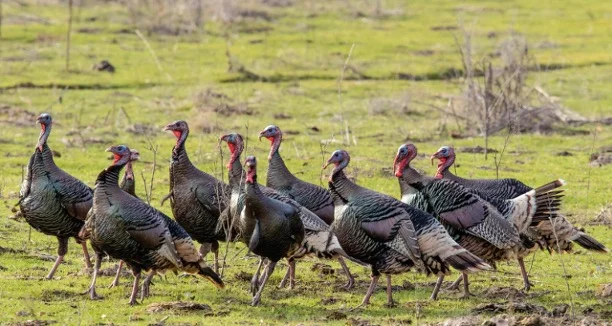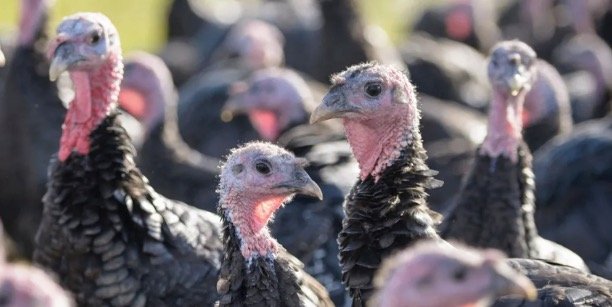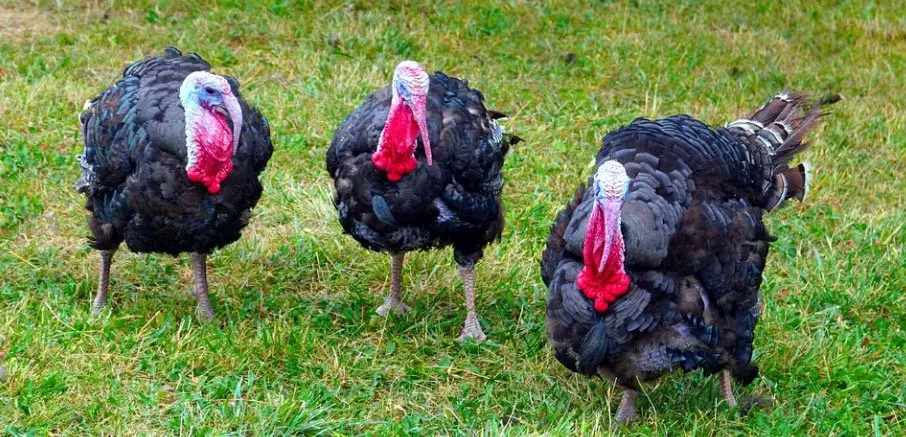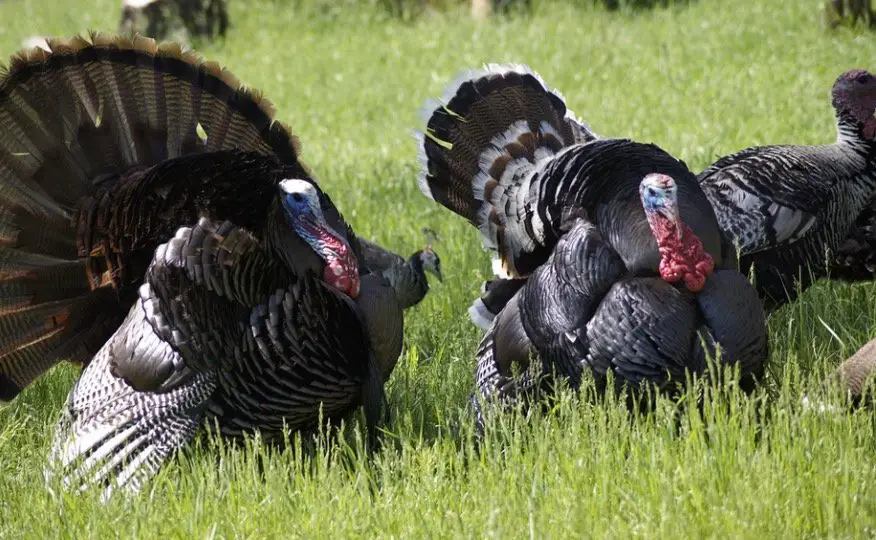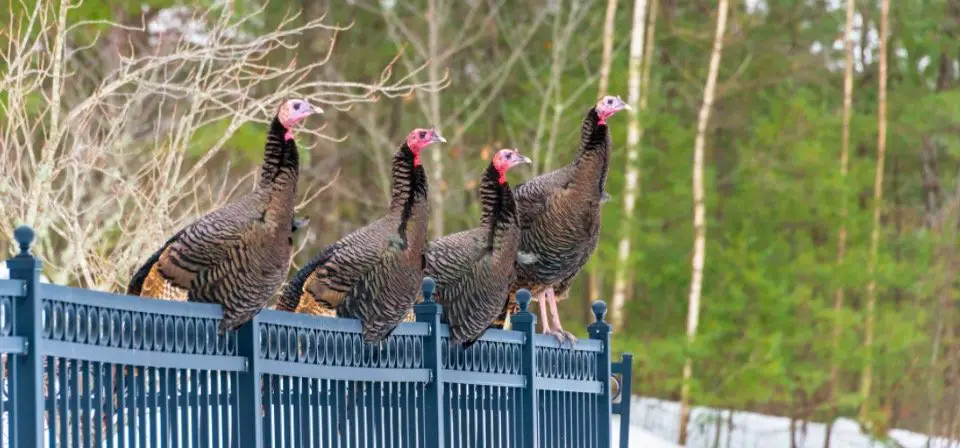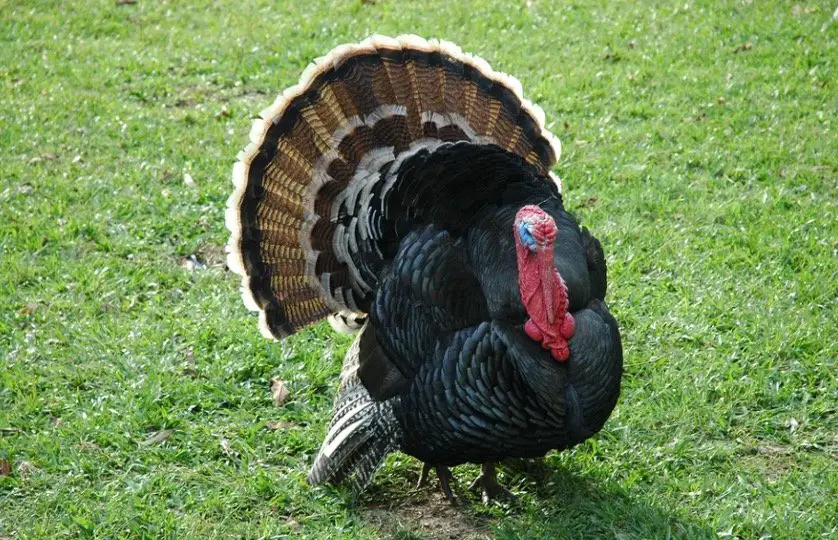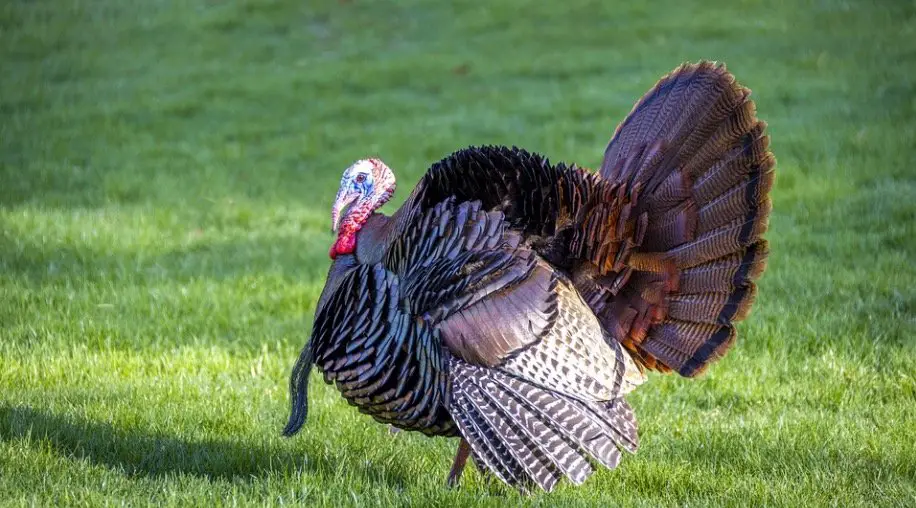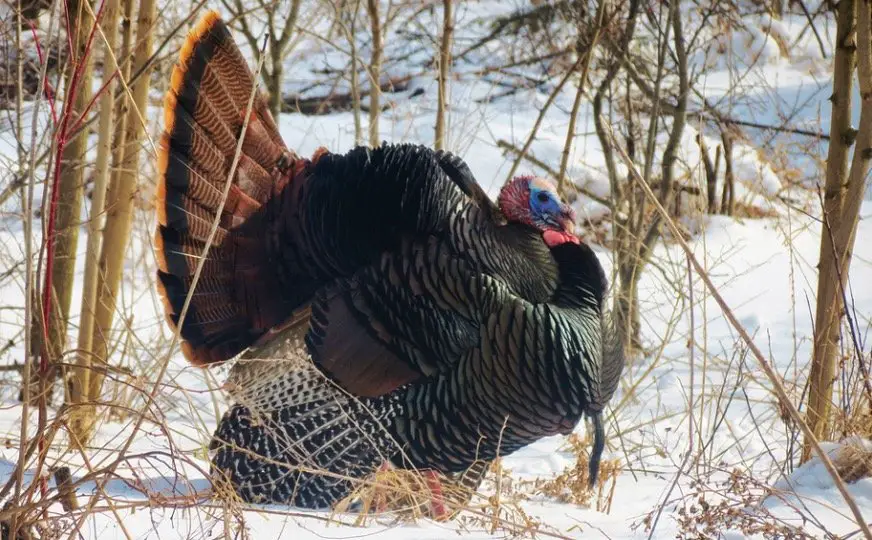What is a Group of Turkeys Called? All You Need To Know
The Turkey is a large North American bird known for its distinct appearance, fleshy head protuberance, and rich meat. Domesticated turkeys are commonly raised for food, especially for special occasions such as Thanksgiving and Christmas. For sport, wild turkeys are also hunted.
What is a Group of Turkeys Called?
A group of turkeys is called a flock, a rafter, and a gaggle. Furthermore, a group of male turkeys is known as a “gobble” or a “rave,” whereas a group of female turkeys is known as a “clutch” or a “poult.” The term “flock” is the most general term used to describe a group of turkeys of any gender.
Listen Turkey Call
Citation Mary Beth Stowe, XC71044. Accessible at www.xeno-canto.org/71044.
What are Other Names for a Group of Turkeys?
- A Brood of Turkeys
- A Crop of Turkeys
- A Herd of Turkeys
- A Death Row of Turkeys
- A Gang of Turkeys
- A Raft of Turkeys
- A Mob of Turkeys
- A Raffle of Turkeys
- A School of Turkeys
How Many Turkeys are in a Group?
Various elements, including habitat, food availability, and the time of year, can have a significant impact on how many turkeys are in a group, or flock. Depending on the resources available in the area and the time of year, flocks of wild turkeys can number anywhere from a few (10-20) to several hundred birds in the wild.
Depending on the available space and the reason the turkeys are being produced, a flock’s size in domesticated settings can change. For instance, a small flock of turkeys raised for personal use would only number a handful, whereas a sizable commercial flock raised for meat production might number thousands of birds.
Why is a Group of Turkeys Called a Rafter?
A group of turkeys is sometimes called a “rafter” because the birds roost in large groups, often on high branches, and the term “rafter” is used to describe a group of roof beams supporting a roof.
The term “rafter” was likely applied to groups of turkeys due to their habit of roosting in large groups on high branches, which resembles the support structure of a roof. The term “rafter” is less commonly used than the term “flock” to describe a group of turkeys, but it is still recognized as a valid term for these birds.
What is a Group of Domesticated Turkeys Called?
A group of domesticated turkeys is also referred to as a flock. The term “flock” refers to a group of any species of domesticated bird, not just turkeys.
The term is widely used to describe a group of domesticated turkeys because it accurately represents the social structure of these birds and their tendency to form large groups for foraging and protection. Turkeys are social birds that live and travel in groups, whether in the wild or on a farm.
What is a Group of Wild Turkeys Called?
A group of wild turkeys is also called a flock. Wild turkeys are sociable birds that forage and dwell in flocks for safety and survival, just like domesticated turkeys. The most popular phrase for a group of wild turkeys is “flock,” which is a good and true way to describe these birds.
In some regions of North America, wild turkeys are frequently hunted for amusement because of their unusual look, which includes their multicolored feathers and fleshy head protuberances.
What is What is a Group of Male Turkeys Called?
A group of male turkeys is called a “gobble” or a “rave.”The unusual courtship displays and vocalizations that male turkeys utilize to entice females are well-known. Male turkeys, also referred to as “toms” or “gobbles” or “raves” congregate in sizable groups, during the mating season and engage in aggressive displays of wooing behavior to entice females.
A rave is a gathering of male turkeys collected together for the purpose of wooing, and the name “gobble” refers to the loud, characteristic call that male turkeys make.
What is a Group of Female Turkeys Called?
A group of female turkeys is called a “clutch” or a “poult.” Since female birds frequently deposit their eggs in a nest, the word “clutch” is a typical way to refer to a group of female birds. Young turkeys are referred as “poults.”
The word “clutch” is frequently used to describe a group of female turkeys foraging or roosting together. Female turkeys, usually known as hens, create their own flocks apart from males. Hens lay eggs throughout the breeding season and then incubate them until they hatch. The young turkeys, or “poults,” then reunite with the hen and her flock.
What is a Group of Baby Turkeys Called?
A group of baby turkeys is called a “brood” or a “chicks.” The term “brood” is a general term used to describe a group of young birds of any species, while the term “chicks” specifically refers to young chickens. However, the term “chicks” is often used colloquially to refer to young turkeys as well.
Baby turkeys, or “poults,” are born covered in downy feathers and are precocial, meaning they are capable of moving around and finding food on their own soon after hatching.
The mother hen, or “hen,” will provide care and protection for her brood until the poults are old enough to fend for themselves. Poults grow quickly and will soon join the flock of adult turkeys to forage and roost together.
Do Turkeys Flock Together in Groups?
Yes, turkeys tend to flock together in groups. Turkeys are social birds and they have a strong tendency to form flocks for protection and foraging purposes. Whether in the wild or on a farm, turkeys are known to travel and live in groups, and they are particularly social during the breeding season. These flocks provide safety and also offer an opportunity for courtship and mating.
Why Turkeys form a Flock?
Turkeys form flocks for several reasons, including:
1. Protection: By living and traveling in groups, turkeys are better able to protect themselves from predators. The large size of the flock can make it more difficult for predators to single out individual birds, and the presence of other turkeys can also serve as an early warning system for danger.
2. Foraging: Turkeys are omnivores and feed on a variety of foods, including seeds, berries, insects, and small mammals. By foraging in a group, turkeys can cover more ground and find more food in a shorter amount of time.
3. Social Behavior: Turkeys are social birds and flocking allows them to engage in courtship and mating behavior during the breeding season. Flocks also provide opportunities for social interaction, such as dust bathing, preening, and vocalizing.
4. Safety in Numbers: Flocks of turkeys can provide safety in numbers, especially for young birds. By traveling and roosting in groups, turkeys can reduce the risk of predation and other threats to their survival.
Why is it a Rafter of Turkeys?
It’s an excellent question with a difficult answer! There is no universal agreement on why a group of turkeys is referred to as a rafter. Rafters are eaves in a building’s roof, and some suggest that turkeys prefer to nest and roost in the rafters if they can.
Despite being largely ground-dwelling birds, turkeys prefer to sit on tree branches and sleep in the canopy or “rafters,” where they are secure from predators.
Another idea is that the term “rafter” was derived in Medieval English from the Greek word for “stitch together,” and it just so happened to be associated with groups of turkeys somewhere in the 15th century.
The evidence is shaky, to say the least, and the fact is that determining the origin of the word “rafters” for a bunch of turkeys is quite difficult.
Why is it a Gaggle of Turkeys?
A gaggle is a group of loud birds that produce gobbling or gaggling noises. Geese are a good example here; “a gaggle of geese” is a well-known collective noun for a bunch of geese.
Turkeys are equally loud birds that may make a range of gobbling and gaggling noises. They have around 28 different sounds that are shared by all turkey subspecies.
However, the gurgling sound made by male turkeys is known as a gobble. As a result, it would seem more sensible to refer to a bunch of turkeys as a gobble of turkeys rather than a gaggle!
Why do Turkeys Flock Together in Large Groups?
For the most of the year, turkeys congregate in gendered groups. Males create their own unique flocks, while females form their own different flocks. Gendered turkey flocks are normally not too far apart and may range in size from 15 to 50 birds.
Turkeys, like many other birds, congregate in order to find protection in numbers. Turkeys can quickly flee and regroup after detecting a danger because to their diverse vocal cries.
Turkey flocks are also necessary for breeding. Flocks also aid male turkeys in their fight for supremacy, since a dominant male may mate with up to ten hens. Male turkeys often congregate with their siblings since hens may brood up to 12 offspring.
When do Turkeys Flock Together?
Turkeys form gendered flocks for the most of the year, but come together ahead to the mating season in March and April. After a few weeks, turkeys separate into smaller mating flocks of males and various females.
Nesting females become more reclusive and often separate from males. Turkeys’ social behaviours are remarkably sophisticated. Male group dominance rituals are violent and continuing, but young males (called jakes) will also strive to establish authority among females until they are able to join a male flock and compete with other males.
Male turkeys often congregate in sibling groupings and are strongly devoted to one another. When fall and winter arrive, both male and female turkeys begin to flock together once again before going into their winter roosts.
What is a Pair of Turkeys Called?
There is no term for a pair of turkeys. Male turkeys are referred to as gobblers or Toms, while young males are referred to as Jakes and juvenile females are referred to as Jennys. Poults are young turkeys.
Are Turkeys Friendly?
In the wild, turkeys have a rigorous and well-structured dominance order, which often leads to combat. However, friendly and loyal behaviours among turkeys have been seen.
When kept as pets, turkeys are known to be remarkably friendly and good-natured. They recognise people by their faces and build close ties with those who treat them well.
While it’s easy to think of turkeys as nothing more than meat, a rising number of individuals, like other domesticated pets, see them as “friends, not food.”
